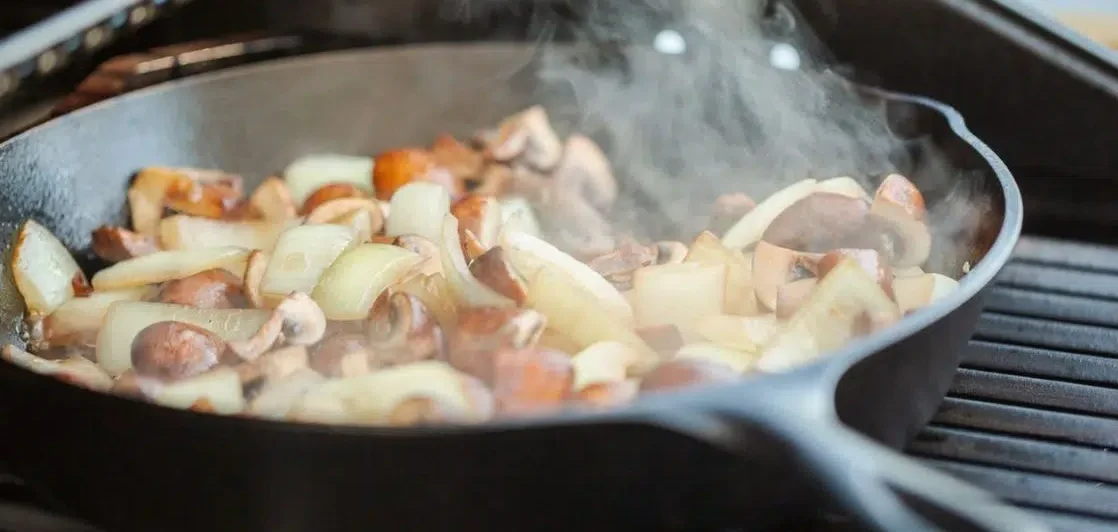Introduction
Cast iron pans are treasured kitchen tools—known for their durability, versatility, and ability to deliver exceptional flavor through even heat distribution. From searing steaks to baking cornbread, a well-seasoned cast iron skillet can elevate nearly any dish. However, not every food plays nicely with this iconic cookware. Certain ingredients can damage the seasoning, alter flavors, or even cause rust. Knowing what not to cook ensures your skillet remains in peak condition for decades.
Origin and Cultural Significance
Cast iron cookware has a long and storied history, dating back over a thousand years to ancient China and later Europe. It became a cornerstone of American kitchens in the 18th and 19th centuries, prized for its ability to retain heat and endure open-flame cooking. Passed down through generations, cast iron skillets are often seen as heirlooms—symbols of home cooking, resilience, and tradition. In many cultures, caring for a cast iron pan is an act of stewardship, connecting cooks across time and place.
Ingredients You Should Never Cook in a Cast Iron Pan (with Explanations)
- Tomato-Based Sauces and Acidic Foods
- Why: The acidity in tomatoes and citrus can strip away the seasoning, leaving metallic flavors in your food.
- Examples: Marinara sauce, lemon chicken, vinegar-based braises.
- Delicate Fish
- Why: Thin fish like tilapia or flounder can stick easily and break apart, especially if your pan isn’t perfectly seasoned.
- Examples: Sole, flounder, tilapia.
- Sticky Desserts or Batter-Based Foods
- Why: Sugar-heavy foods like caramel or crepes can cling to the surface and damage the nonstick layer.
- Examples: Caramel sauce, pancakes, sticky buns.
- Smelly Foods (Garlic, Fish, Strong Spices)
- Why: Cast iron retains odors. Intense aromas can transfer to your next dish, especially if you bake in the same pan.
- Examples: Garlic shrimp, curry, fish curry.
- Eggs (in a New or Lightly Seasoned Pan)
- Why: Until your skillet develops a strong seasoning layer, eggs will stick terribly.
- Examples: Scrambled eggs, omelets, fried eggs.
- Braising or Boiling for Long Periods
- Why: Extended moisture contact can soften and strip seasoning, making the surface prone to rust.
- Examples: Soups, stews, long-simmered beans.
- Wine or Vinegar-Based Deglazes
- Why: Acid in these liquids can react with iron, leaving a metallic taste and dulling your seasoning.
Optional Additions (If You Must Cook These Foods)
If you really want to cook acidic or sticky foods:
- Use an enameled cast iron pan — it protects from acid and rust.
- Apply extra oil layers before cooking to protect the seasoning.
- Limit cook time to prevent reaction and damage.
- Finish acidic sauces in stainless steel or nonstick cookware instead.
Tips for Success
- Always preheat your cast iron slowly before adding food.
- Maintain the seasoning by lightly oiling after each use.
- Never soak in water; dry immediately after washing.
- Use wooden or silicone utensils to avoid scratching.
- Store in a dry, ventilated area to prevent rust.
- Re-season regularly if foods start sticking or dull spots appear.
Instructions (Care Routine)
- After Cooking: Let the pan cool slightly.
- Clean Gently: Use warm water and a soft brush (avoid soap if possible).
- Dry Thoroughly: Heat over low flame to evaporate all moisture.
- Oil the Surface: Add a thin coat of neutral oil (like flaxseed or canola).
- Heat Again: Place on medium-low for 10 minutes to let the oil polymerize.
- Store Properly: Keep uncovered or with a paper towel to absorb humidity.
Description
A cast iron skillet is a powerhouse of flavor-building potential—robust, rustic, and nearly indestructible when properly maintained. However, it’s a living piece of cookware that demands respect and knowledge. Understanding its limitations helps you preserve its nonstick surface and rich, seasoned patina, ensuring your meals always taste clean and authentic.
Nutritional Information (General Note)
While the cookware itself doesn’t have nutritional content, cooking with cast iron can increase your iron intake, especially when preparing acidic or moist foods. However, excessive reactivity (from acidic dishes) can lead to off-flavors, which is why moderation and proper seasoning are key.
Conclusion
Your cast iron skillet is a culinary workhorse—but like any classic tool, it has its boundaries. Avoiding high-acid, sticky, or odor-heavy foods will keep your skillet seasoned and functional for years. When treated with care, it rewards you with generations of perfect sears, golden crusts, and comforting flavors.
Recommendation
Use cast iron for what it does best:
- Searing meats
- Roasting vegetables
- Baking cornbread or cobblers
- Frying crispy potatoes
For sauces or highly acidic recipes, switch to stainless steel or enameled cookware for best results.
Embracing Healthful Indulgence
Caring for your cast iron pan isn’t just about cooking—it’s about mindful nourishment. A well-loved skillet encourages home-cooked meals made with intention, fostering a deeper connection to wholesome, flavorful food. By honoring its strengths and respecting its limits, you embrace a sustainable, healthful approach to cooking—balancing indulgence with long-lasting care.
